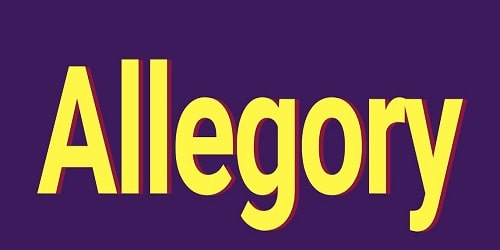Allegory Meaning
The etymological origin of the term allegory is found in Greek. More precisely, it is found in the word άλληγορία, which would be translated as “to speak figuratively.” A meaning that would mean that today that concept comes to refer to the fiction that involves something meaning or representing a different thing.
However, the Dictionary of the Royal Spanish Academy of Language also gives a second meaning to the term in question and uses it to define any work or composition, whether artistic or literary, that has an allegorical meaning.
A third meaning of allegory is found in the artistic field, and more specifically in painting and sculpture. In this specific case, said concept is defined as the symbolic representation that is made of a series of abstract ideas through figures, sets of said figures or qualities.
A clear example of this third meaning can be found in world-famous paintings such as Spring (1477 – 1478) by the Renaissance painter Sandro Botticelli or The Garden of Earthly Delights (1480 – 1490) by the Dutch artist Hieronymus Bosch.
Finally, the fourth meaning of the word we are addressing is the one used in the field of Rhetoric. In this case, it is a figure that in a speech, and through the use of a series of metaphors and a real and a figurative use, is responsible for making known something different from what is being expressed.
Allegory Meaning in Hindi
रूपक शब्द की व्युत्पत्ति ग्रीक भाषा में पाई जाती है। अधिक सटीक रूप से, यह άλληγορία शब्द में पाया जाता है, जिसका अनुवाद “लाक्षणिक रूप से बोलना” होगा। एक अर्थ जिसका अर्थ यह होगा कि आज यह अवधारणा उस कल्पना को संदर्भित करती है जिसमें कुछ अर्थ शामिल होता है या किसी अलग चीज़ का प्रतिनिधित्व करता है।
हालांकि, रॉयल स्पैनिश एकेडमी ऑफ लैंग्वेज का शब्दकोश भी इस शब्द को दूसरा अर्थ देता है और इसका उपयोग किसी भी काम या रचना को परिभाषित करने के लिए करता है, चाहे वह कलात्मक हो या साहित्यिक, जिसका एक रूपक अर्थ हो।
रूपक का तीसरा अर्थ कलात्मक क्षेत्र में और अधिक विशेष रूप से चित्रकला और मूर्तिकला में पाया जाता है। इस विशिष्ट मामले में, उक्त अवधारणा को प्रतीकात्मक प्रतिनिधित्व के रूप में परिभाषित किया गया है जो आकृतियों, उक्त आकृतियों या गुणों के सेट के माध्यम से अमूर्त विचारों की एक श्रृंखला से बना है।
इस तीसरे अर्थ का एक स्पष्ट उदाहरण पुनर्जागरण चित्रकार सैंड्रो बोटिसेली द्वारा स्प्रिंग (1477 – 1478) या डच कलाकार हिरोनिमस बॉश द्वारा द गार्डन ऑफ़ अर्थली डिलाइट्स (1480 – 1490) जैसी विश्व प्रसिद्ध पेंटिंग्स में पाया जा सकता है।
अंत में, हम जिस शब्द को संबोधित कर रहे हैं उसका चौथा अर्थ बयानबाजी के क्षेत्र में इस्तेमाल किया जाने वाला अर्थ है। इस मामले में, यह एक ऐसा रूपक है जो भाषण में, और रूपकों की एक श्रृंखला और एक वास्तविक और एक आलंकारिक उपयोग के माध्यम से, व्यक्त की जा रही चीज़ से अलग कुछ बताने के लिए जिम्मेदार है।
